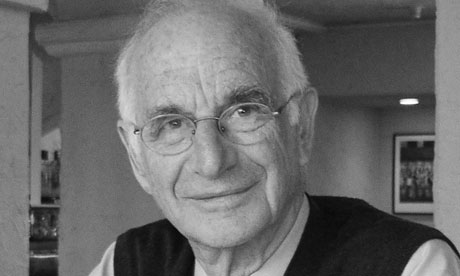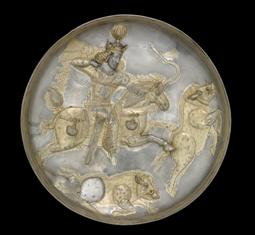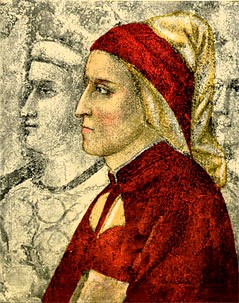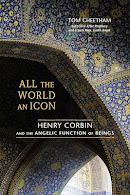"...the Imagination (or love, or sympathy, or any other sentiment) induces knowledge, and knowledge of an 'object' which is proper to it..."
Henry Corbin (1903-1978) was a scholar, philosopher and theologian. He was a champion of the transformative power of the Imagination and of the transcendent reality of the individual in a world threatened by totalitarianisms of all kinds. One of the 20th century’s most prolific scholars of Islamic mysticism, Corbin was Professor of Islam & Islamic Philosophy at the Sorbonne in Paris and at the University of Teheran. He was a major figure at the Eranos Conferences in Switzerland. He introduced the concept of the mundus imaginalis into contemporary thought. His work has provided a foundation for archetypal psychology as developed by James Hillman and influenced countless poets and artists worldwide. But Corbin’s central project was to provide a framework for understanding the unity of the religions of the Book: Judaism, Christianity and Islam. His great work Alone with the Alone: Creative Imagination in the Sufism of Ibn ‘Arabi is a classic initiatory text of visionary spirituality that transcends the tragic divisions among the three great monotheisms. Corbin’s life was devoted to the struggle to free the religious imagination from fundamentalisms of every kind. His work marks a watershed in our understanding of the religions of the West and makes a profound contribution to the study of the place of the imagination in human life.Search The Legacy of Henry Corbin: Over 800 Posts
Monday, January 30, 2012
Henry Corbin & The Secret Chiefs
Trey Spruance of Secret Chiefs 3: "I started studying the musical systems of antiquity to try to understand what made them tick"
"Actually, I was just reading Suhrawardi, who was a Persian mystical philosopher from the twelfth century. I believe in Suhrawardi; a very practical outlook comes together in him between the rational intellect and the intuitive intellect and all of this. But he's basing a lot of his rational arguments in Neoplatonic philosophy, in a way. Once I was starting to try to get at the bases he was establishing, so that he could have the other half of things, which is sort of the mystical, enlightenment part of things.
Henry Corbin, who pretty much introduced Suhrawardi to the West, called him the "Hellenite magi" because he had one foot in the Hellenic world and one foot in ancient Zoroastrian mysticism. So it was that and the subsequent schools of Ishraqi schools of philosophy and doing background research on Neoplatonic philosophy that led me back to the Stoics first." Read the interview
More on the Secret Chiefs
"Actually, I was just reading Suhrawardi, who was a Persian mystical philosopher from the twelfth century. I believe in Suhrawardi; a very practical outlook comes together in him between the rational intellect and the intuitive intellect and all of this. But he's basing a lot of his rational arguments in Neoplatonic philosophy, in a way. Once I was starting to try to get at the bases he was establishing, so that he could have the other half of things, which is sort of the mystical, enlightenment part of things.
Henry Corbin, who pretty much introduced Suhrawardi to the West, called him the "Hellenite magi" because he had one foot in the Hellenic world and one foot in ancient Zoroastrian mysticism. So it was that and the subsequent schools of Ishraqi schools of philosophy and doing background research on Neoplatonic philosophy that led me back to the Stoics first." Read the interview
More on the Secret Chiefs
Saturday, January 28, 2012
Friday, January 27, 2012
Thursday, January 26, 2012
Ventura on Hillman
Letters at 3AM: James Hillman (1926-2011) Remembering James Hillman
By Michael Ventura, Fri., Jan. 13, 2012
By Michael Ventura, Fri., Jan. 13, 2012
Wednesday, January 25, 2012
Iranian Metalwork at the Freer & Sackler
|
|||
|
Tuesday, January 24, 2012
Following Muhammad
Ernst, Carl W. Following Muhammad: Rethinking Islam in the Contemporary World. Chapel Hill: University of North Carolina Press, 2003.
Monday, January 23, 2012
Saturday, January 21, 2012
"Corbin, an unlucky author in Iran"
From the Iran Books News Agency: 21 Jan 2012 12:57 "Henry Corbin and Shiite theosophy" was held on Wednesday, 18 Jan. by the Philosophy Book of the Month.
A session was held in the House of Literary in which Kamran Fani said: "Before Corbin's death, a perfect translation of his works weren’t released. However the condition improved following the Islamic Revolution and more of his books were translated but still many of his noted works weren’t converted into Persian."
READ THE ARTICLE
READ THE ARTICLE
Friday, January 20, 2012
Jung & Swedenborg
Given the connections among Corbin, Jung & Swedenborg readers of Corbin may wish to know of Eugene Taylor's work on Jung & Swedenborg - one recent example of his studies can be found in Volume 2 Issue 2 of JUNG HISTORY in Jung on Swedenborg, Redivivus.
Thursday, January 19, 2012
Bylebyl, Corbin, Suhrawardi
Michael Bylebyl, « From Dawn’s Art », described as "une sorte de récit évocateur, où H. Corbin joue un rôle remarquable" (Abstracta Iranica here), pp 373-380 in Angelo-Michele Piemontese. Lewis, Franklin et Sharma, Sunil (eds.) , The Necklace of the Pleiades: Studies in Persian Literature Presented to Heshmat Moayyad on his 80th Birthday. Amsterdam & Lafayette, Indiana USA, Rozenberg Publishers & Purdue University Press, 2007, 380 pp. SOME of this truly remarkable tale can be read at the amazon link above - I discover thanks to an alert reader that the full text of the book can be found at library.nu. Bylebyl produced the "Ismaili muslimism" fascicle for Charles Olson's Curriculum of the Soul. Here is an excerpt from "From Dawn's Art":
"When Corbin walked into the room, his appearance surprised me. He was short, portly and white-haired, not at all the image conjured up from reading his books. With a deep suave voice he spoke exclusively in a French which was unique for its highly original sentence structure. Some of this was due no doubt to his expansive imagination. Some was due to the fact that he was almost totally deaf. At the start of the lecture he turned off his hearing aid, closed his eyes, and for the next hour shared with us the treasures of his imagination. Even though some of the details of Corbin’s lecture escaped me, I was struck by the man’s presence and the way his voice seemed to inhabit the hall. He seemed to be “out there” in a way which was unnerving, especially when he intoned the phrase “monde visionaire” as though the lecture was being conducted from some other dimension of reality. A lifetime of belief had created a terre celeste which he clearly inhabited and made visible to others."
Wednesday, January 18, 2012
Marcotte on Suhrawardi
"Suhrawardī's realm of the imaginal. " Marcotte, Roxanne D. (2011). In Ишрак: Ежегодник исламской философии. no 2 / Ishraq: Islamic philosophy yearbook. no. 2 (pp. 68-79) Moscow, Russia: Russian Academy of Sciences. Institute of Philosophy, Iranian Institute of Philosophy, Islamic culture research foundation. full PDF HERE
Saturday, January 14, 2012
Philemon Foundation Seminar - Geneva
| ||
| ||
|
Tuesday, January 10, 2012
Corbin & American Poetry - Another in the Series
I've lost track (again) of this series of posts, but this must be #30-something. I want to draw attention, again, to the poetry of Joseph Donahue which is deeply and explicitly in sympathy with Corbin's visionary work throughout, and to announce the publication of the next volume of his long poem: Dissolves, Terra Lucida IV-VIII, from Talisman House. I remind readers to read Peter O'Leary's fascinating appreciation of Pam Rehm and Joseph Donahue in the Chicago Review : Apocalypticism - A Way Forward for Poetry. (pdf), and these reviews of the first volume of Terra Lucida by Robert Baird and John Olson. Also indispensable in our context are Donahue's review of Rosestrikes and Coffee Grinds by Seyhan Erözçelik translated by Murat Nemet-Nejat, Talisman House, 2010 and his review of Nathaniel Tarn's Ins and Outs of the Forest Rivers, New Directions, 2008. Donahue's poetry seems to me of exquisite and breathtaking intensity.
“If one thing characterizes the active imagination Donahue brings to bear on his poem, it’s his desire that the visionary reality he has entered not be merely some dream, but a place of absolute reality. His skill at conveying this feeling seems unmatched by any other living American poet, such that parts of his poem exhibit a simultaneous lightness of touch and gravitational pull, where surrealistic follies vie with imaginal intensities.” —Peter O’Leary
“This is an episode of high romance and mystical compassion within Joseph Donahue’s on-going long poem — with the intertwining of love of the luminous earth, the erotic transformations of muse-love, and the maternal gift — the love of vocation and of the prophetic name of the poet all unrolling in an elaborated strand of meditation. The work has medieval motifs (like those of Duncan or of H.D.) reanimated in our time: forbidden lovers, lyric folds inside songs of three cultures (Christian, Jewish, Muslim), the garden, the shock of desire, the shock of sci-ence that extends mystery, the shock of death and transfiguration, all compelling in their endless aftermath. This is a book of continuous yearning, a book of cosmic creation, a book of spiritual meditation all saturated by Donahue’s angelic ear and eye.” —Rachel Blau DuPlessis
“Picasso said that whenever he painted there might not be an object, but there was the fragrance of an object. In Dissolves, Joseph Donahue combines some-thing like an object with something like a fragrance. His cubism, unglazed and personal, produces magical other dimensions.” —David Shapiro
“If one thing characterizes the active imagination Donahue brings to bear on his poem, it’s his desire that the visionary reality he has entered not be merely some dream, but a place of absolute reality. His skill at conveying this feeling seems unmatched by any other living American poet, such that parts of his poem exhibit a simultaneous lightness of touch and gravitational pull, where surrealistic follies vie with imaginal intensities.” —Peter O’Leary
“This is an episode of high romance and mystical compassion within Joseph Donahue’s on-going long poem — with the intertwining of love of the luminous earth, the erotic transformations of muse-love, and the maternal gift — the love of vocation and of the prophetic name of the poet all unrolling in an elaborated strand of meditation. The work has medieval motifs (like those of Duncan or of H.D.) reanimated in our time: forbidden lovers, lyric folds inside songs of three cultures (Christian, Jewish, Muslim), the garden, the shock of desire, the shock of sci-ence that extends mystery, the shock of death and transfiguration, all compelling in their endless aftermath. This is a book of continuous yearning, a book of cosmic creation, a book of spiritual meditation all saturated by Donahue’s angelic ear and eye.” —Rachel Blau DuPlessis
“Picasso said that whenever he painted there might not be an object, but there was the fragrance of an object. In Dissolves, Joseph Donahue combines some-thing like an object with something like a fragrance. His cubism, unglazed and personal, produces magical other dimensions.” —David Shapiro
Monday, January 9, 2012
7ème JOURNEE HENRY CORBIN - Online Audio
7ème JOURNEE HENRY CORBIN
Henry Corbin et le débat contemporain en sciences humaines
le samedi 17 décembre 2011
à l’Ecole Normale Supérieure, 45 rue d’Ulm, 75005 Paris
Amphithéâtre RATAUD
Henry Corbin et le débat contemporain en sciences humaines
le samedi 17 décembre 2011
à l’Ecole Normale Supérieure, 45 rue d’Ulm, 75005 Paris
Amphithéâtre RATAUD
Christian JAMBET (Ecole Pratique des Hautes Etudes), « Henry Corbin et Louis Massignon ».
Alexandre AHMADI (psychiatre-psychothérapeute jungien) « Jung et Corbin. Monde de l'Inconscient et Monde Imaginal ».
Alexandre AHMADI (psychiatre-psychothérapeute jungien) « Jung et Corbin. Monde de l'Inconscient et Monde Imaginal ».
Manuel QUINON (Université de Strasbourg) : « Henry Corbin et Gilbert Durand ».
David BISSON (Université Rennes I), « Henry Corbin et Gershom Scholem ».
Maria SOSTER (chercheur indépendant), « Aperçus sur des textes corbiniens dans les années trente »
Many thanks to Daniel Proulx and Daniel Gastambide for making these recordings available.
Friday, January 6, 2012
Persian Music Podcast
From the Freer & Sackler Galleries:
Master of Persian Music: Hossein Alizadeh, tar and setar
See Corbin's "On the Meaning of Music in Persian Mysticism"
Master of Persian Music: Hossein Alizadeh, tar and setar
See Corbin's "On the Meaning of Music in Persian Mysticism"
Tuesday, January 3, 2012
On Dante
From Ron Slate's Review of A N Wilson's Dante in Love:
Wilson writes:
“From the beginning of Dante’s serious poetic career, there exists the bold idea that in the experience of loving Beatrice, he will discover not only what is generally meant by the term Love. He will discover that Love itself (the force, as he would conclude, which moves the sun and the other stars) is going to bring about great changes in his lifetime – changes to the Church, changes to the way that society is ordered – as well as changes in the relations between men and women. To this extent, Dante and Beatrice are to be seen as subversives, as revolutionaries, in the sphere of human or secular love …”
This sounds like Corbin's Dante to me.
Wilson writes:
“From the beginning of Dante’s serious poetic career, there exists the bold idea that in the experience of loving Beatrice, he will discover not only what is generally meant by the term Love. He will discover that Love itself (the force, as he would conclude, which moves the sun and the other stars) is going to bring about great changes in his lifetime – changes to the Church, changes to the way that society is ordered – as well as changes in the relations between men and women. To this extent, Dante and Beatrice are to be seen as subversives, as revolutionaries, in the sphere of human or secular love …”
This sounds like Corbin's Dante to me.
Subscribe to:
Posts (Atom)





 "Together
the Freer and Sackler house one of the world's most remarkable
collections, which offers invaluable insight into the lives of the
powerful of the period," said Julian Raby, the Dame Jillian Sackler
Director of the Arthur M. Sackler Gallery and the Freer Gallery of Art.
"Together
the Freer and Sackler house one of the world's most remarkable
collections, which offers invaluable insight into the lives of the
powerful of the period," said Julian Raby, the Dame Jillian Sackler
Director of the Arthur M. Sackler Gallery and the Freer Gallery of Art. 











